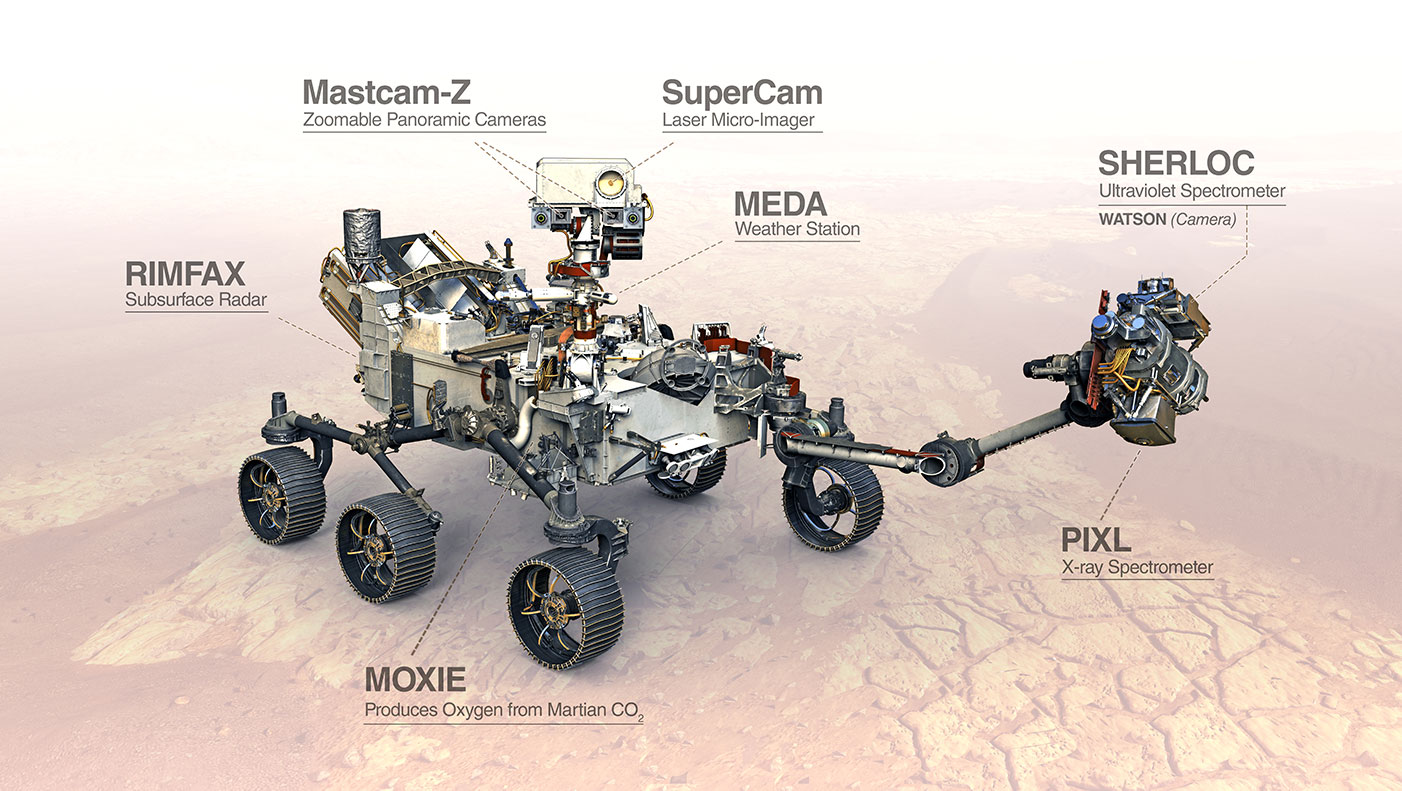My big question that I had was “If we understand the nature of life on earth, Are we able to find other life forms in the universe?” It is a tough question because from what I’ve researched, the answer is that no one found any life yet. That doesn’t mean that we aren’t still trying.
The information I found from Canadian space agency is that rovers on mars are scouting for rock and soil samples and sending the data back to earth. Perseverance -their newest rover- will use a drill to collect select samples of rock/soil and store for returning to earth. Their main objective is to find habitable conditions, find past life and learn about geology on mars to ultimately prepare for human exploration
NASA says that the newest method of testing for life is using a liquid-based technique called capillary electrophoresis in order to separate a mixture of organic molecules into its components. It is used to look for amino acids, which we know are the building blocks for life on earth. According to a new study in analytical chemistry, this method is about 10,000 times more sensitive than the current methods such as using rovers on other planets. A key advantage of using capillary electrophoresis is that the process is relatively simpler and easy to perform. It involves combining a liquid sample with a liquid reagent, then the team performs chemical analysis under select conditions. By shining a laser across the mixture -known as laser induced fluorescence detection- specific molecules can be observed moving at different speeds. They get separated based on how quickly they respond to electric fields. The researchers used the technique to analyze amino acids present in the salt-rich waters of Mono Lake in California. The lake’s exceptionally high alkaline content makes it a challenging habitat for life, and an excellent stand-in for salty waters believed to be on Mars, or the ocean worlds of Saturn’s moon Enceladus and Jupiter’s moon Europa. The researchers were able to simultaneously analyze 17 different amino acids, which they are calling “the Signature 17 standard.” These amino acids were chosen for study because they are the most commonly found on Earth or elsewhere. Using this method, they are able to tell the difference between amino acids that come from non-living sources like meteorites versus amino acids that come from living organisms. One of NASA’s highest-level objectives is the search for life in the universe,” Willis said. “Our best chance of finding life is by using powerful liquid-based analyses like this one on ocean worlds
According to Chemical and engineering news, NASA sent 2 rovers -The Viking 1 and 2- to mars in which they found gases emitted from samples treated with carbon nutrients, it could possibly be some sort of biological life form. Other instruments on the rovers found trace amounts of organic molecules but they weren’t enough, the experiments have been considered inconclusive.
The information I found on Science direct are that there are currently 3 methods of finding life outside of earth,The first is using rovers like Viking 1 and 2, curiosity etc. on other planets such as mars to scan rocks and soil to send the recordings back to earth. Some also collect the physical samples and bring them back to earth. The next way is utilizing telescopes such as the Hubble space, MOST, James Webb and more, also observatories, for example Onsala Space Observatory and DRAO to look with our own magnified eyes deep into the far reaches of space. and sending radio signals through space. for most of the ways we can find life it’s just a matter of time and waiting. According to some scientists, life outside earth will likely be found on planets similar to ours.
Libretexts physics says that the possibilities that mars has hosted or still is hosting life on it has been possible and the query has a history that goes for generations. Following the dawn of the space age came the opportunity to answer this question up close through a progression of missions to Mars that started with the first successful flyby of a robotic spacecraft in 1964. They have led to the deployment of NASA’s Curiosity rover, which had landed on Mars in 2012. The missions to Mars displayed some hints that liquid water -one of life’s primary requirements- may once have existed on the surface, later missions have reinforced that conclusion. The NASA Viking landers, whose purpose was to search directly for evidence of life on Mars, arrived on Mars in 1976. Viking’s onboard instruments found no organic molecules -stuff of which life is made- and no evidence of biological activity in the martian soils it analyzed meaning the search is currently not concluded.
To wrap it up, research for life anywhere outside of earth is still ongoing, it is just a matter of time. If we do find life, it will likely be on an exoplanet that is similar to earth, there may be life on mars but we just don’t know yet. For all we know we could just be alone in the universe.

This project showed extreme dedication to the question that was asked, your question was unique and I enjoyed reader all the research that was done to meet your question that you answer. Extremely well made, well done!
I can tell you put a lot of thought and dedication to this project. Very compelling question. It fits the criteria very well. Good job!
Very good explanation. It’s cool that you used data from the Canadian Space Agency. You made it easy to understand to someone who hasn’t researched this much.
Great info. Nice touch of using a Canadian source such as the CSA, for the video though I would use a non-profit, non-news source video, but all in all great presentation.